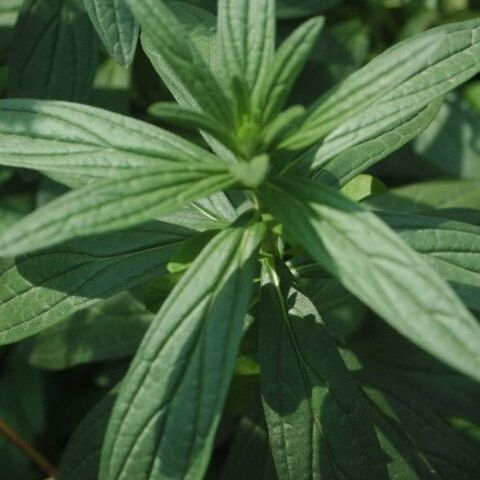Herbs perennial. Roots dark red, with a copious purple dye. Stems usually 1-3, erect, appressed or spreading, branching distally, 40-90 cm tall, short strigose; branches ascending, frequently slightly curved. Leaves sessile, ovate-lanceolate to broadly lanceolate, 3-8 × 0.7-1.7 cm, short strigose, base attenuate, apex acuminate; veins prominent abaxially, more densely strigose. Inflorescences terminal, 2-6 cm, elongated in fruit; bracts similar to leaves but smaller. Calyx lobes linear, ca. 4 mm, to 9 mm in fruit, short strigose outside. Corolla white, 7-9 mm, sparsely pubescent outside; tube ca. 4 mm; throat appendages semiglobose, glabrous; limb ca. as long as tube; lobes spreading, broadly ovate, 2.5-3 mm, margin entire or subundulate, apex sometimes retuse. Stamens inserted slightly above middle of corolla tube; filaments ca. 0.4 mm; anthers 1-1.2 mm. Style 2.2-2.5 mm. Nutlets white or pale yellowish brown, ovoid, ca. 3.5 mm, smooth, shiny, concave adaxially with center line forming a longitudinal groove. Fl. and fr. Jun-Sep. 2n = 28.
More
A herb. It keeps growing from year to year. The roots are dark red with a purple dye. There are usually 1-3 erect stems. They are 40-90 cm tall. The leaves do not have stalks. They are broadly sword shaped and 3-8 cm long by 1-2 cm wide. The flowers are at the top of the plant. They are white.

